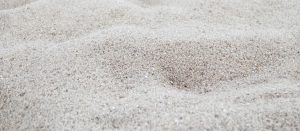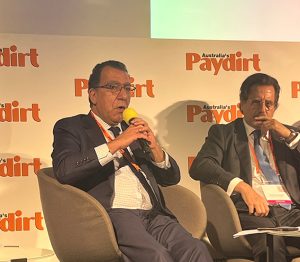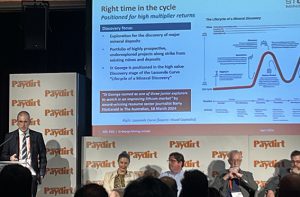In the shadows of the ongoing trade war between the US and China, an emerging rare earths player is starting to build up a significant head of steam in Western Australia’s Gascoyne region.
Hastings Technology Metals (ASX: HAS) often flies under the radar compared to some of its higher-profile peers, led by Lynas Corp, still the only ASX-listed producer of rare earths.
But the way Hastings is methodically progressing its world-class Yangibana project, investor attention is likely to step up as this $162 million Perth company ticks off key boxes ahead of a proposed mine construction start in the first half of next year.
What sets Hastings apart from many of its peers in the neodymium and praseodymium game – or NdPr for short – is the grade contained across the orebodies that make up Yangibana, 250 kilometres north east of Carnarvon.
The smart investor is starting to see past the Yangibana project’s head grade of 1.12% of total rare earth oxides (TREO) contained in the measured and indicated resource of 21.25 million tonnes and instead focusing on the world-beating levels of NdPr values.
As Hastings pointed out in its ASX announcement earlier this week, when it released stunning drilling results from the Simon’s Find deposit at Yangibana, the NdPr-to-TREO ratio at this particular orebody is as high as 52% – compared to levels of 40% to 41% across the Bald Hill and Frasers deposits.
Not that Bald Hill and Frasers should be sneezed at – as Hastings said, a typical NdPr-rich deposit around the world has levels of 15% to 20% of these sought-after rare earths, which are used in the permanent magnets for electric vehicle powertrains and wind turbines.
“While the average head grades at Simon’s Find may be lower than at Yangibana’s other deposits, what is important and makes this deposit such a stand-out – in global terms – are the high levels of neodymium and praseodymium,” Hastings executive chairman Charles Lew said.
“Hastings will now start the process of collating the drilling information to define a new mineral resource for Simon’s Find.
“The success at Simon’s Find comes amid a busy period for Hastings as we advance Yangibana’s development by concluding more offtake contracts and settling on a coastal side for our hydrometallurgical plant.”
As exciting as the Simon’s Find results were, Hastings picked a bad day to release them – last Monday, just hours before the ASX blew itself up and trading across the bourse had to be suspended.
As of Friday night, Hastings was trading at 13¢, a hefty discount to Canaccord Genuity’s speculative buy tip based on a 25¢ target price.
“A rare beast: low cap-ex, advanced rare earth opportunity in Australia,” Canaccord analyst Reg Spencer titled his initiating note to clients this week.
Spencer noted the industry high NdPr-to-TREO ratio at Yangibana, “a key feature of the project … (which) … results in a higher rare earths basket price versus peers and improved operating margins and project economics”.
“Our research suggests that Yangibana is the only greenfield, ex-China light rare earths development project capable of achieving production by 2023, a period when we expect supply shortfalls to appear in the NdPr market,” Spencer told clients.
“In our view, this makes Hastings a clear standout in the peer group.”
Hastings has said Yangibana could satisfy 7% of global NdPr demand, which would make it a globally significant and strategically important producer.
It will be music to the ears of Hastings’ tightly knit shareholder group as they prepare for the company’s virtual annual general meeting at the end of this month.
There is also the prospect of significant newsflow over the coming months, just when many market participants are expected to pull up stumps to conclude a turbulent year.
Hastings has flagged further results from its 2020 drilling program at Yangibana – designed to both deliver grade control but also underscore the potential for a mineral resource, and therefore mine life, extension – and the market is hoping for offtake updates.
Hastings has already secured a blue-chip offtake partner in Germany’s Schaeffler, a family enterprise that generated sales of 14.4 billion Euros ($23.4 billion) last year from its precision components and systems for drivetrain and chassis applications.
Other offtake partners, with whom negotiations are at various stages, include ThyssenKrupp and Sky Rock Baotou.
The other significant news Hastings investors are awaiting is confirmation of where along the West Australian coast the company intends to locate Yangibana’s hydrometallurgical plant.
Hastings told the ASX in July that a re-evaluation of Yangibana’s development plans had identified a $68 million capital saving – or 13% of the total cap-ex, which has now been cut to $449 million – by shifting the hydrometallurgical plant from the mine site to the coast. Since then, work has been underway to identify and secure a suitable coastal location that offers Hastings access to power, gas and water.
The expected steady newsflow should stand Hastings in good stead as it picks up the pace ahead of finalising debt and equity finance in line with the target date for the start of Yangibana’s construction.



